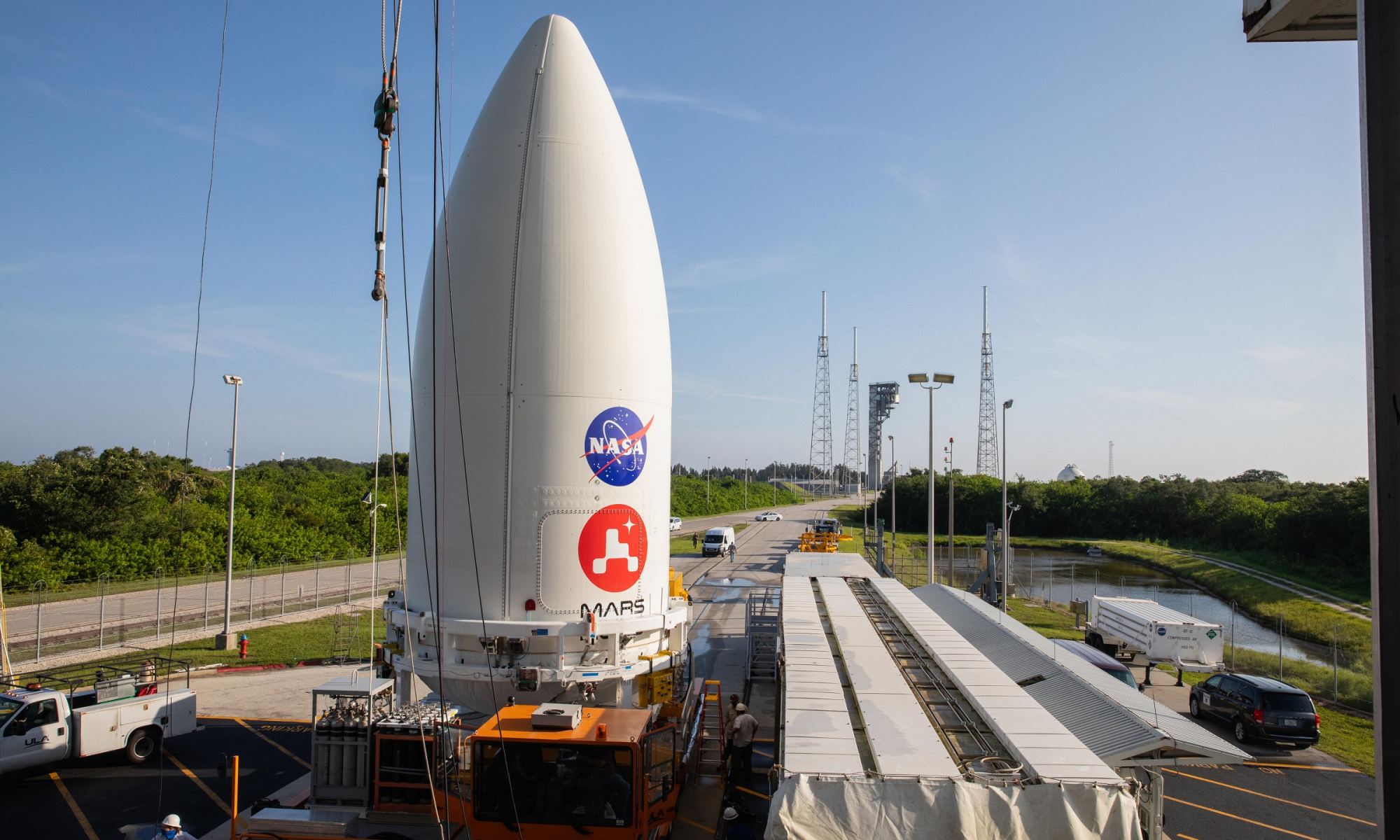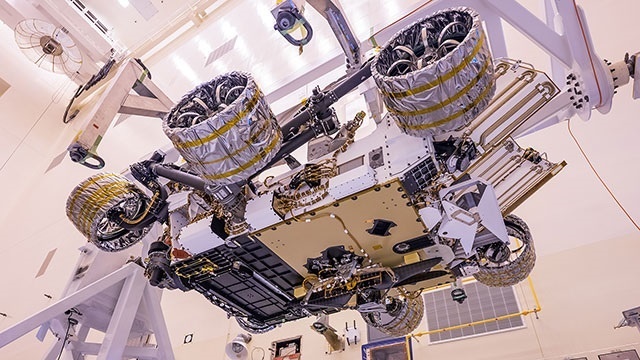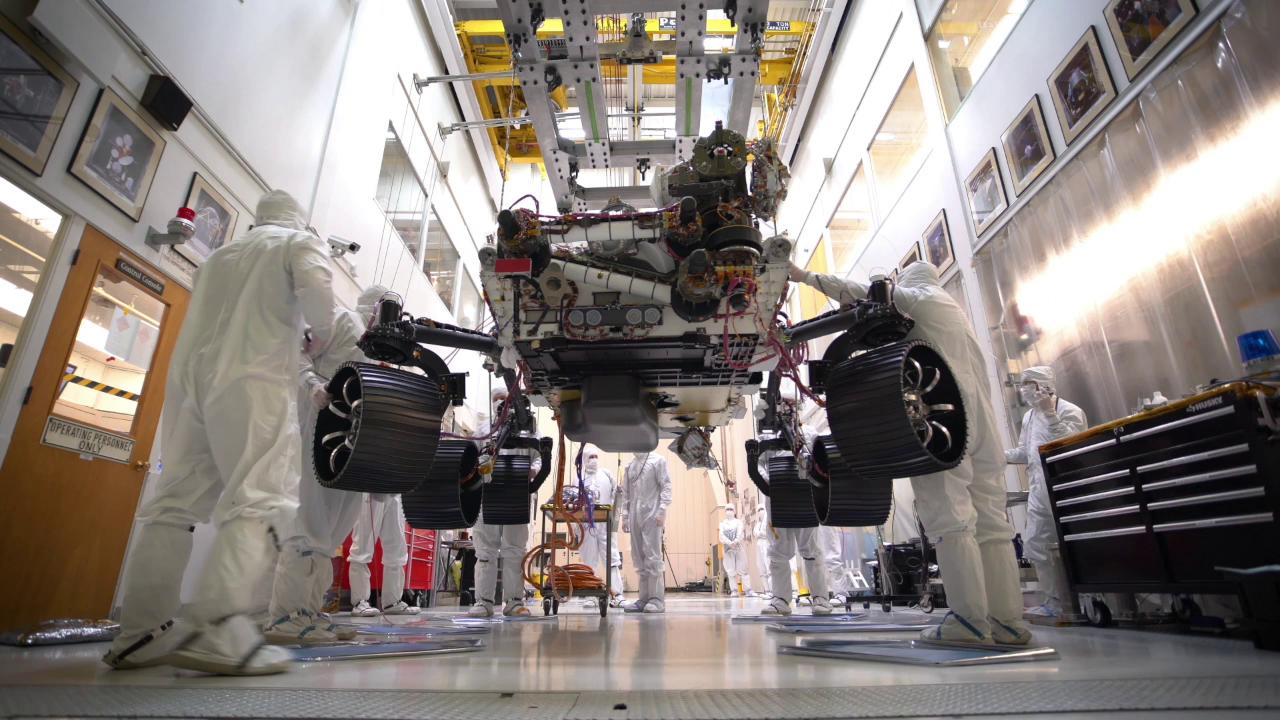Where’s Waldo (or Where’s Wally) is a very popular book series for all ages. One way to make it potentially more interesting is to adapt it to interplanetary exploration by searching for a Martian rover in a picture taken from a Martian helicopter. Ingenuity took a picture on its eleventh flight that would be a worthy addition to any interplanetary search game – in this image, the goal is to find Perseverance.
Continue reading “Ingenuity Sees Perseverance From Above”“You Wouldn’t Believe What I Just Saw:” Ingenuity Helicopter Flies Successfully on Mars

NASA pulled off a Wright Brothers moment on Mars early today by successfully flying the tiny Ingenuity helicopter for approximately 40 seconds.
“We can now say that human beings have flown a rotorcraft on another planet,” said MiMi Aung, Ingenuity’s lead engineer, speaking to her colleagues gathered at the Jet Propulsion Laboratory (JPL) in California to execute and monitor the flight.
Continue reading ““You Wouldn’t Believe What I Just Saw:” Ingenuity Helicopter Flies Successfully on Mars”Our Complete Guide to Mars Opposition Season 2020
Grab your telescope: when it comes to astronomy, 2020 saved the best for last, with a fine opposition season for the planet Mars. In 2020, the Red Planet reaches opposition next month on October 13th.
Continue reading “Our Complete Guide to Mars Opposition Season 2020”Perseverance Went Into Safe Mode Shortly After Launch, But it’s Fine
On Thursday, July 30th, NASA launched the most sophisticated Mars rover ever built atop a United Launch Alliance (ULA) Atlas V rocket from Space Launch Complex 41 at Cape Canaveral Air Force Station, Florida.This mission includes the Perseverance rover (Curiosity‘s sister vehicle) and the Ingenuity Mars Helicopter, both of which are being flown on a seven-month journey by the Mars 2020 spacecraft.
In a minor hiccup, the Mars 2020 spacecraft entered safe mode a few hours after launch, apparently due to a temperature anomaly. This was the conclusion reached by mission controllers after receiving telemetry data on the spacecraft via the NASA Deep Space Network. Luckily, the spacecraft is working nominally and is on its way toward Mars to join in the search for evidence of past (and present) life!
Continue reading “Perseverance Went Into Safe Mode Shortly After Launch, But it’s Fine”Perseverance Has Been Put Inside its Atlas V Rocket
This summer – between July 30th and August 15th – NASA’s Perseverance rover will begin its long journey for Mars. Once it arrives (by February of 2021), it will join its sister mission, the Curiosity rover, and a slew of other robotic landers and orbiters that are busy characterizing the atmosphere and surface of the Red Planet. Ultimately, the goal of Perseverance is to determine if Mars once supported life (and maybe still does!)
Just last week (July 7th), the Perseverance rover and all the other elements of the Mars 2020 spacecraft were loaded aboard the United Launch Alliance (ULA) Atlas V rocket that will send it on its way. This included the aeroshell, cruise stage, and descent stage, which will be responsible for transporting the Perseverance rover during its six-month journey to Mars and depositing it on the surface.
Continue reading “Perseverance Has Been Put Inside its Atlas V Rocket”Dawn Patrol: Jupiter and Saturn at Opposition 2020
Missing the planets in the first half of 2020? That’s all about to change, as the gas giants Jupiter and Saturn reach opposition in rapid succession this month, heralding a return to the dusk sky.
Continue reading “Dawn Patrol: Jupiter and Saturn at Opposition 2020”Wheels and Helicopter Attached to Perseverance Rover
This summer, NASA’s Perseverance rover will launch from Cape Canaveral Air Force Base in Florida. When it arrives on Mars (on February 18th, 2021), it will join the Curiosity rover and a host of other missions that are looking for evidence of past and present life on the Red Planet. At present, engineers at the Kennedy Space Center in Florida are conducting the final assembly of the rover in preparation for launch.
With less than 14 weeks to go before the mission’s launch period opens up, several important development milestones have been completed. This includes integrating the rover’s remaining components, like the rover’s six wheels and the small helicopter drone that will help explore the surface. These elements, and a slew of other final preparations, were integrated with the rover over the past few weeks.
Continue reading “Wheels and Helicopter Attached to Perseverance Rover”Spaceflight Stories Expected for 2020
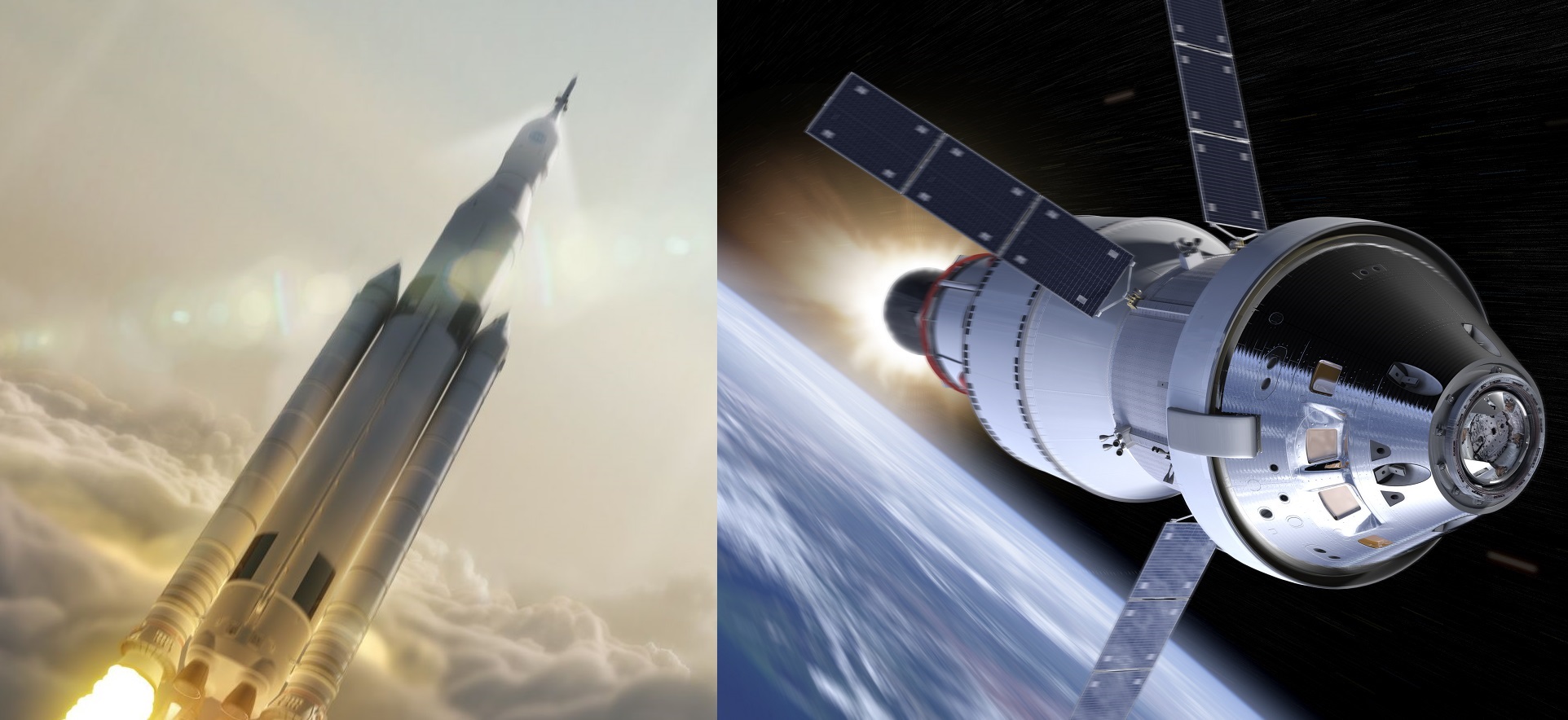
The year two thousand and twenty is almost upon us. And as always, space agencies and aerospace companies all around the world are preparing to spend the coming year accomplishing a long list of missions and developments. Between NASA, the ESA, China, SpaceX, and others, there are enough plans to impress even the most curmudgeonly of space enthusiasts.
Continue reading “Spaceflight Stories Expected for 2020”Mars 2020 Stands Up on its Wheels For The First Time
This coming July, the Mars 2020 rover will launch from Cape Canaveral, Florida, and begin its journey to the Red Planet. After it touches down in the Jezero Crater, the rover will commence science operations similar to what Curiosity has been doing since 2012. This will consist of driving over rough terrain, sampling the atmosphere, collecting drill samples, and subjecting them to chemical analysis.
In order to get it ready for this mission, the engineering team over at NASA’s Jet Propulsion Laboratory are putting the rover through its paces. On Oct. 8th, this included placing the full weight of the rover on its legs and wheels for the first time ever. This event, which was tantamount to an infant standing for the very first time, was captured with a time-lapse video that you can see below.
Continue reading “Mars 2020 Stands Up on its Wheels For The First Time”NASA is Sending a Helicopter to Mars as Part of the 2020 Rover
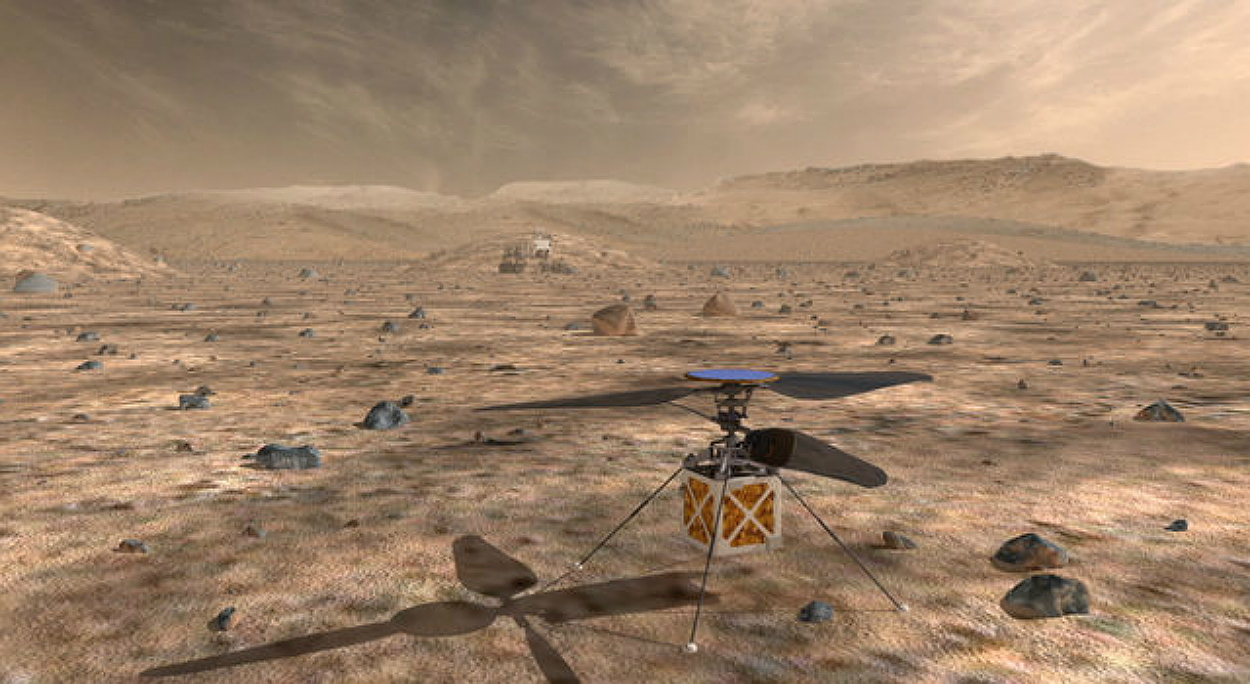
At present, there are over a dozen robotic missions exploring the atmosphere and surface of Mars. These include, among others, the Curiosity rover, the Opportunity rover, the Mars Orbiter Mission (MOM), the Mars Reconnaissance Orbiter (MRO), the Mars Atmosphere and Volatile EvolutioN (MAVEN) orbiter, and the soon-to-arrive InSight Lander. In the coming decade, many more missions are planned.
For instance, NASA plans to expand on what Curiosity has accomplished by sending the Mars 2020 rover to conduct a sample-return mission. According to a recent announcement issued by NASA, this mission will also include the Mars Helicopter – a small, autonomous rotorcraft that will demonstrate the viability and potential of heavier-than-air vehicles on the Red Planet.
As NASA Administrator Jim Bridenstine declared in a recent NASA press release, this rotocraft is in keeping with NASA’s long-standing traditions of innovation. “NASA has a proud history of firsts,” she said. “The idea of a helicopter flying the skies of another planet is thrilling. The Mars Helicopter holds much promise for our future science, discovery, and exploration missions to Mars.”
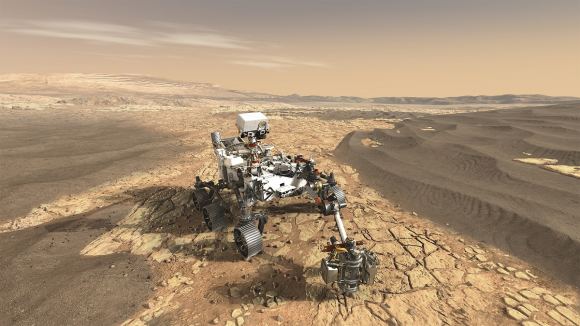
U.S. Rep. John Culberson of Texas echoed Bridenstine statement. “It’s fitting that the United States of America is the first nation in history to fly the first heavier-than-air craft on another world,” he said. “This exciting and visionary achievement will inspire young people all over the United States to become scientists and engineers, paving the way for even greater discoveries in the future.”
The Mars Helicopter began as technology development project at NASA’s Jet Propulsion Laboratory (JPL), where it spent the past four years being designed, developed, tested and retested. The result of this is a football-sized rotorcraft that weights just under 1.8 kg (four pounds) and relies on two counter-rotating blades to spin at a rate of almost 3,000 rpm (10 times the rate of a helicopter here on Earth).
As Mimi Aung, the Mars Helicopter project manager at JPL, indicated:
“The altitude record for a helicopter flying here on Earth is about 40,000 feet. The atmosphere of Mars is only one percent that of Earth, so when our helicopter is on the Martian surface, it’s already at the Earth equivalent of 100,000 feet up. To make it fly at that low atmospheric density, we had to scrutinize everything, make it as light as possible while being as strong and as powerful as it can possibly be.”
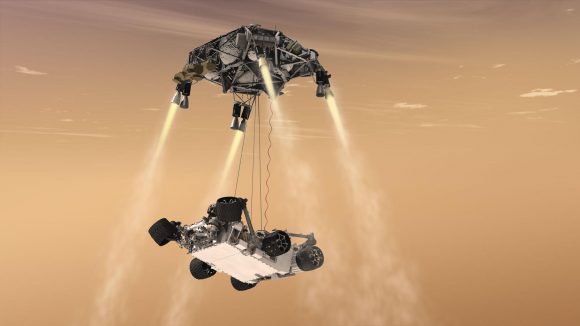
This concept is ideal for navigating through Mars’ thin atmosphere, where the mean surface pressure is about 0.6% that of Earth’s at sea level (0.60 kPa compared to 101.3 kPa). This low-flying helicopter would not only be able to increase the range of a rover, it will be able to explore areas that the rover would find inaccessible. As Thomas Zurbuchen, the Associate Administrator for NASA’s Science Mission Directorate, explained:
“Exploring the Red Planet with NASA’s Mars Helicopter exemplifies a successful marriage of science and technology innovation and is a unique opportunity to advance Mars exploration for the future. After the Wright Brothers proved 117 years ago that powered, sustained, and controlled flight was possible here on Earth, another group of American pioneers may prove the same can be done on another world.”
Other capabilities that make it optimized for Mars exploration include lithium-ion batteries, solar cells to keep them charged, and heating mechanisms that will keep it warm during Martian nights – where average temperatures can get as low as 210 K (-63 °C; -82 °F) around the mid-latitudes. In addition, the helicopter is programmed to fly autonomously, since it cannot be flown in real-time (given the distances involved).
Commands will be issued from controllers on Earth, using the rover as a relay, who will instruct the helicopter to commence flight once it is ready to deploy. This will begin shortly after the rover arrives on the planet (which is expected to happen by February 2021) with the helicopter attached to its belly pan. The rover will then select a location to deploy the helicopter onto the ground.
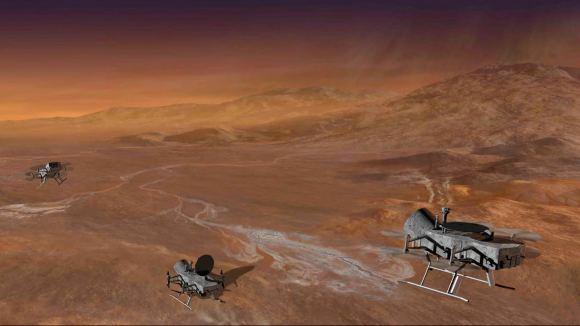
After it is finished charging its batteries and a series of pre-flight tests are performed, controllers on Earth will relay commands to the Mars Helicopter to commence its first 30-day flight test campaign. This will include up to five flights that will take it to increasingly greater distances from the rover (up to a few hundred meters) for longer periods of time (up to 90 seconds).
On its first flight, the helicopter will make a short vertical climb to 3 meters (10 feet) where it will hover for about 30 seconds. Once these tests are complete, the Mars Helicopter will assist the rover as it conducts geological assessments and determines the habitability of its landing sight. The purpose of this will be to search for signs of ancient life on Mars and assesses the natural resources and hazards for future missions involving human explorers.
The rover will also conduct the first-ever sample-return mission from Mars, obtaining samples of rock and soil, encasing them in sealed tubes, and leaving them on the planet for future retrieval by astronauts. If all goes well, the helicopter will demonstrate that low-flying scouts and aerial vehicles can be a valuable part of any future missions. These will likely include robotic missions to Saturn’s largest moon, Titan, where researchers are hoping to explore the surface and atmosphere using helicopter (such as the Dragonfly concept).
The Mars 2020 mission is expected to reveal some very impressive things about the Red Planet. If the helicopter proves to be a viable part of the mission, we can expect that additional information and images will be provided from locations that a conventional rover cannot go. And in the meantime, be sure to enjoy this animation of the Mars Helicopter in action, courtesy of NASA-JPL:
Further Reading: NASA




